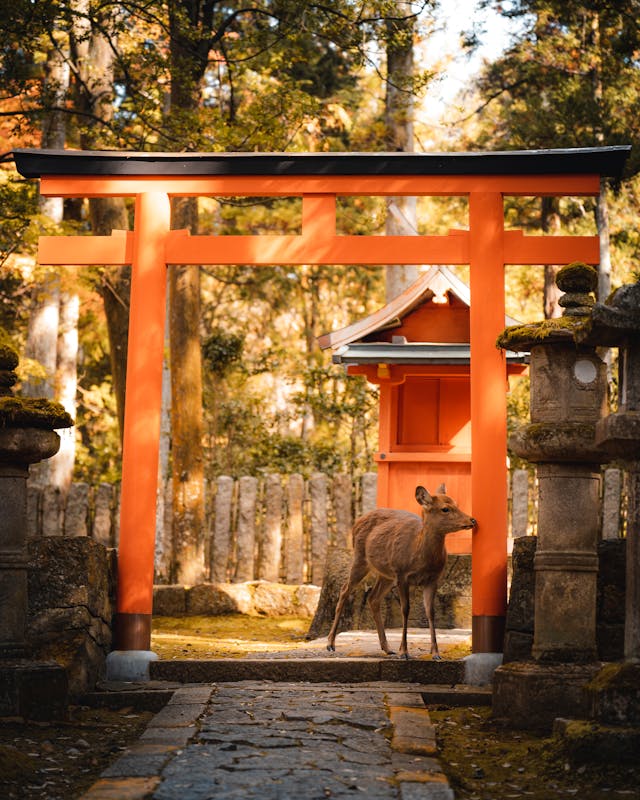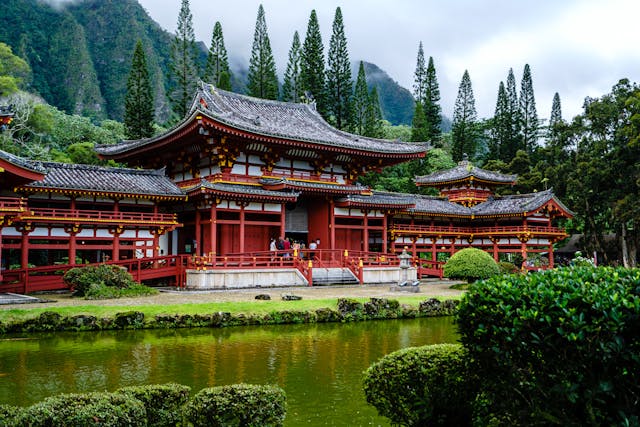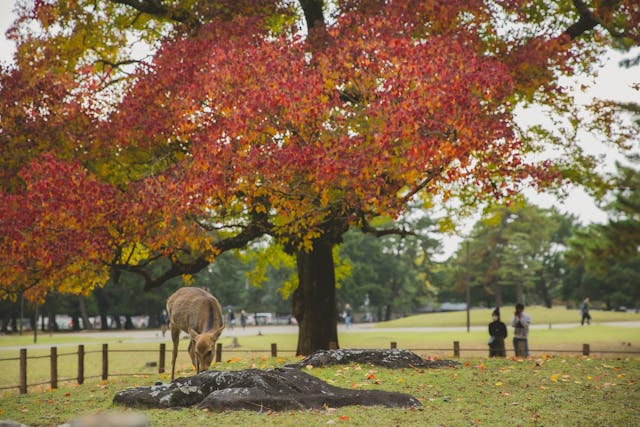Nara is the capital city of Nara Prefecture, Japan. This city is located less than one hour from Kyoto and Osaka. Because of its historical importance, the city remains full of cultural treasures, including some of Japan’s oldest and largest temples. In December 1998, Nara was added to the UNESCO World Heritage Sites list. This city is home to eight amazing temples and shrines. Managing to maintain a small-town atmosphere. The city has become somewhat of a cultural destination and is one of the country’s leading craft centers, famous for its carved wooden dolls, lacquerware, and ceramics.
Here are the Best Things to Do in Nara
1. Nara Park

Nara Park is a public park located in the city of Nara, Japan. It is at the foot of Mount Wakakusa. This is the oldest park in Japan, established in 1880. The park covers an area of over 500 hectares. Nara Park’s major highlight is the deer that run freely inside the park. This deer expects people to feed them sembei. These deer have long been the symbol of Nara. It has been believed that these deer are regarded as the messengers of the gods so no one dares harm them. Visitors can find several interesting historical landmarks in and around the park-like Kofukuji Temple, Todaiji Temple, Kasuga Temple, and the Nara National Museum. Nara Park has pleasant strolling paths with plum and cherry blossoms in the spring and beautiful multi-colored leaves in the autumn.
2. Yoshino Mountain
Yoshino Mountain is one of the most famous places in Japan. This mountain is about 90 minutes away by train from Nara. The whole mountain turns pink from early April to May, with 30,000 trees in about 200 different varieties. Because of altitude, the trees blossom longer here. So visitors have almost a whole month to enjoy them. The trees here are considered sacred and closely associated with Shugendo, an ascetic form of Buddhism.
3. Todaiji Temple

Todaiji Temple is a Buddhist temple. This temple was once one of the powerful Seven Great Temples. It is located in the city of Nara, Japan. Todaiji Temple was originally founded in the year 738 CE. This temple is probably the most famous attraction in Nara. It is known for its magnificent bronze Nara Daibutsu statue. The temple has a great Buddha hall, which is said to be the largest wooden structure in the world. It has been damaged many times and has subsequently been restored. This entire temple was built without a single nail being used. Todaiji Temple is listed as a UNESCO World Heritage Site.
4. Isuien Garden
Isuien Garden is a Japanese garden located in Nara, the old capital of Japan near Kyoto. It is home to the small interesting Neiraku Art Museum. That was opened in 1969. This museum features vintage pottery, ceramics, and arts and crafts from Korea and China. Isuien Garden is the only walking garden in Nara. It is divided into two sections, which were originally two separate gardens. Both gardens feature a pagoda. The 2 gardens are connected by an attractive walkway. At Isuien Garden visitors can find a few small teas. The best times to visit the gardens are spring and summer.
5. Kasuga Shrine (Kasuga Taisha Shrine)

6. Nara National Museum
This museum is one of the pre-eminent national art museums in Japan. Nara National Museum houses many priceless Japanese Buddhist artworks, scrolls, paintings, and archaeological items from various historical eras. The main highlight of the museum is the Shosoin Treasure House. Nara National Museum is the world’s largest collection of 8th-century Silk Road exhibits that have over 9,000 pieces. The collection includes musical instruments from Tang China, lapis lazuli stones from Turkiye, cut-glass bowls from Persia, and cups made from rhinoceros horn from India. It even has many items from Japan’s imperial collections.
